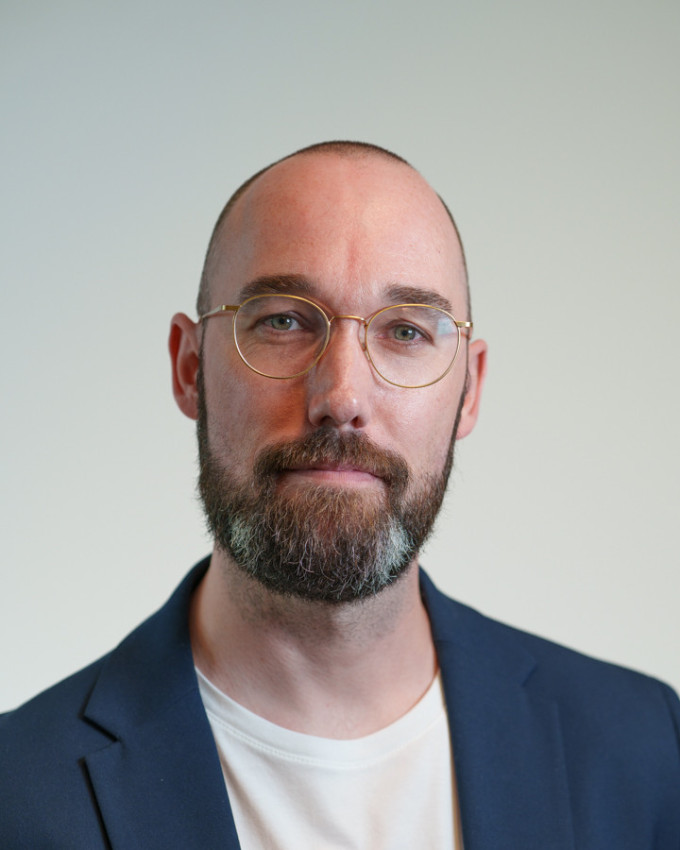
Where is our long-term vision?
Climate change, increasing inequality and rising tensions in society. Much is at stake for our future. But it is precisely in times of crisis that long-term thinking is crucial, argues Rudy van Belkom, director of The Netherlands Study Centre for Technology Trends (STT), in an essay (in English) for tech magazine De Ingenieur.
Dit essay in het Nederlands lezen? Klik dan hier.
For the need for long-term thinking, I would like to refer to the book The Good Ancestor by philosopher Roman Krznaric. According to Krznaric, the future is seen as a kind of dumping ground of ecological damage and technological risks, in which economic interests are favored. According to the philosopher, we must learn to think in terms of centuries instead of in terms of years.
Krznaric cites the example of the medieval cathedral. The architect knew in advance that he would never see the completion of the construction. For people of our time, this would be close to unbearable. We insist on sharing our success stories on platforms like LinkedIn as soon as possible. Any long-term consequences are being postponed further and further, causing problematic issues to pile up.
That is a crucial misconception. We must therefore learn to be a good ancestor for the generations that come after us. An inspiring example is the ‘seventh generation principle’ of the Iroquois. When making important decisions, this indigenous tribe in North America is thinking seven generations ahead, or roughly two hundred years.
Political cramp

However, for many people long-term thinking is not at all self-evident. Most of us only take action when our feet are getting wet. Take politics, for example. Complex problems, such as climate change, require a long-term vision and approach. Still, after elections politicians usually go into a cramp, focusing solely on challenges directly ahead. After all, they only have four years to prove themselves. Many politicians are therefore more concerned with the impression they make in the short term than with the influence they may have in the long term.
An example of this is the statement by the Dutch Prime Minister. In 2013, Mark Rutte spoke the words: ‘Vision is like the elephant that obstructs the view.’ I learned that the word vision is derived from the Latin videre, meaning to see or look. Vision is therefore the exact opposite of what Mr. Rutte is claiming. Vision provides insight and clarity, it describes a vision or dream of the future.
This statement by Rutte may seem relatively innocent - he admitted to regretting his words in 2020 after having endured persistent criticism - but it symbolizes a larger problem in society: we lack a vision that we can support as a collective. A long-term vision offering hope and encouraging action.
'Five to twelve' means too late to act
Problems are now often approached fatalistically: ‘it is five to twelve, we must act now.’ But if you only have five minutes left, why bother? Then it is already too late.
A dreamless society is a breeding ground for passivity. We live from crisis to crisis, with our backs firmly towards the future. In fact, the longing for the past is even the essence of the campaign of many political parties. Think of the slogan of Geert Wilders’ right-wing Partij voor de Vrijheid, known by its Dutch acronym PVV: ‘The Netherlands belongs to us again.’ Or the slogan of Thierry Baudet’s far-right Forum for Democracy FvD: ‘Vote the Netherlands back.’ They consciously respond to a feeling of fear and uncertainty.
A dreamless society is a breeding ground for passivity
Blind spots
Long-term thinking is not that easy at all. Long-term explorations often miss the mark because they focus too much on technological developments. For example, the arrival of the mobile telephone had already been predicted in the 1950s, but people at the time could not imagine married women in the workplace at all. This is also referred to as the cultural blind spot.
A good example of this is the self-driving car. Autonomous vehicles were visualized as far back as the 1950s. Futuristic images show autonomous vehicles on the road, in which families play a board game together. Entirely in line with the era. When we look at visualizations of the self-driving car of today, we see slogans such as 'work on wheels'. These days, it’s all about speed and efficiency. Not the technology, but the social context appears to be the determining factor.
This blind spot can also be seen in movies and science fiction stories. Consider, for example, the popular cartoon from the 1960s: The Jetsons. In a highly technological world, we see a family with their household robot in a space vehicle. True to the stereotype, the household robot is dressed in female clothing and the man is behind the wheel.
Modern science fiction
When the film Back to the Future celebrated its 30th anniversary in 2015, people were especially curious about which technology had been predicted correctly. The question of whether the changing social context had been properly portrayed was not given any attention.
This principle can also be seen in modern science fiction. Think of the Netflix series Black Mirror. In a dystopian world, we see how technology has gripped society. They take a technology as a starting point, fast-forward its possibilities thirty years and place it in a society as we know it. This makes it very imaginable, guaranteeing an enormously high entertainment value, but adding relatively little as a vision of the future.
Four futures
It is therefore important to let go of the idea that we can predict the future. Predictions are also not interesting at all. Uncertainty is the charm of life. It’s what motivates us to make plans and to have ambitions. It is much more interesting to explore the future. This has nothing to do with building castles in the air.
To be able to make informed choices for the future, we need to know our options. Mapping out future options therefore has an important function in the present. This also means that the future does not exist. Different visions of the future are possible. According to the cone of possibilities, four futures are conceivable, which are determined by a changing degree of uncertainty.
Probable futures
For example, there are probable futures, or the most likely futures. These are visions of the future that, given current developments, are very conceivable. Consider, for example, the future of education. It is highly conceivable that the need for customization will be met by the further integration of digital tools in the classroom. This future has already been partly deployed with student tracking systems, although this seems to be more inspired by control than by customization.
Also, there are the plausible futures. These involve looking at cross-domain developments which are then integrated into the specific context. For example, in several domains there is a need to be immersed in an experience; as enrichment (or blurring) of reality. Applications of virtual reality (VR) are increasingly being used for this. Consider, for example, the brokerage. People who buy a new-build home can view their still-to-be-built house in 3D through VR glasses. It is not unlikely that these developments will also be applied in education, immersing pupils and students in the teaching material. For example, surgeons in training can use VR to perform an operation without touching a human body.
Possible futures
Then there are also the possible futures, futures that let go of the limitations in the present and explore new combinations. Previous approaches to the future are still very much focused on the classical classroom and the campus. But what if physical educational institutions disappear? And what if theoretically trained professions are taken over by technology? In the future, students may be able to put together their own packages and purchase training materials from various educational providers. And as they develop skills, they may well be supported by a virtual assistant.
Choices we make now help shape the future
Now I hear you thinking: how desirable are these visions of the future? Good question! That is why there are also the preferred futures, or the desirable futures. Because if there is no single future, can’t we at least partly shape our options ourselves? In addition to a future that happens to us, there is also a future that we shape together. Choices we make now, help shape the future.
That is why we should not ask the question of what knowledge and skills young people should have in order to find a job in the future. But the question is what knowledge and skills we want young people to have in the future in order to fill the jobs that we consider desirable. The way in which young people will provide for their livelihood in the future largely determines what kind of society we will live in.
When we as a society place a dot on the horizon (see textblock Step by Step below), we can collectively support this and work towards it together. Of course there are still several roads leading to Rome, but this will at least allow us to have a constructive conversation with each other about how we are going to achieve that desired future. A shared long-term vision encourages action.
Step-by-step
We create the future together. Organizations do not need any crystal ball to visualize the future. We have our human imagination. The challenge is to stretch it and use it constructively. The following global step-by-step plan may help:
1 Invest in a future-oriented organizational culture
For many people, long-term thinking is not their first nature. This requires creating both a sense of urgency and a sense of excitement. It helps to share best practices.
2 Assemble a balanced team
Long-term explorations need both shapers and builders. ‘Shapers’ who can determine the dot on the horizon and ‘builders’ who can map out the urgent challenges.
3 Give the team a mandate
It shouldn’t be a hobby club; long-term explorations must actually be used in the organization and thus be taken seriously. For this it is important to formulate a clear goal.
4 Choose the right method(s)
Different issues require different methodologies. Think of trend analysis, scenario planning and backcasting. Consult experts for this and ensure that they are already involved in the research design.
5 Involve the entire organization
Communicate the dot on the horizon and let employees provide feedback. It is important that a long-term vision is shared collectively.
6 Ensure follow-up
Translate the long-term exploration into concrete choices to be made in the present. People want to know what it means for their position and to be able to put it to work.
Rudy van Belkom has been director of The Netherlands Study Centre for Technology Trends (STT) since May 2022. In his recent book Alive and Clicking, he argues that there is still hope for democracy.
Photo: Depositphotos








